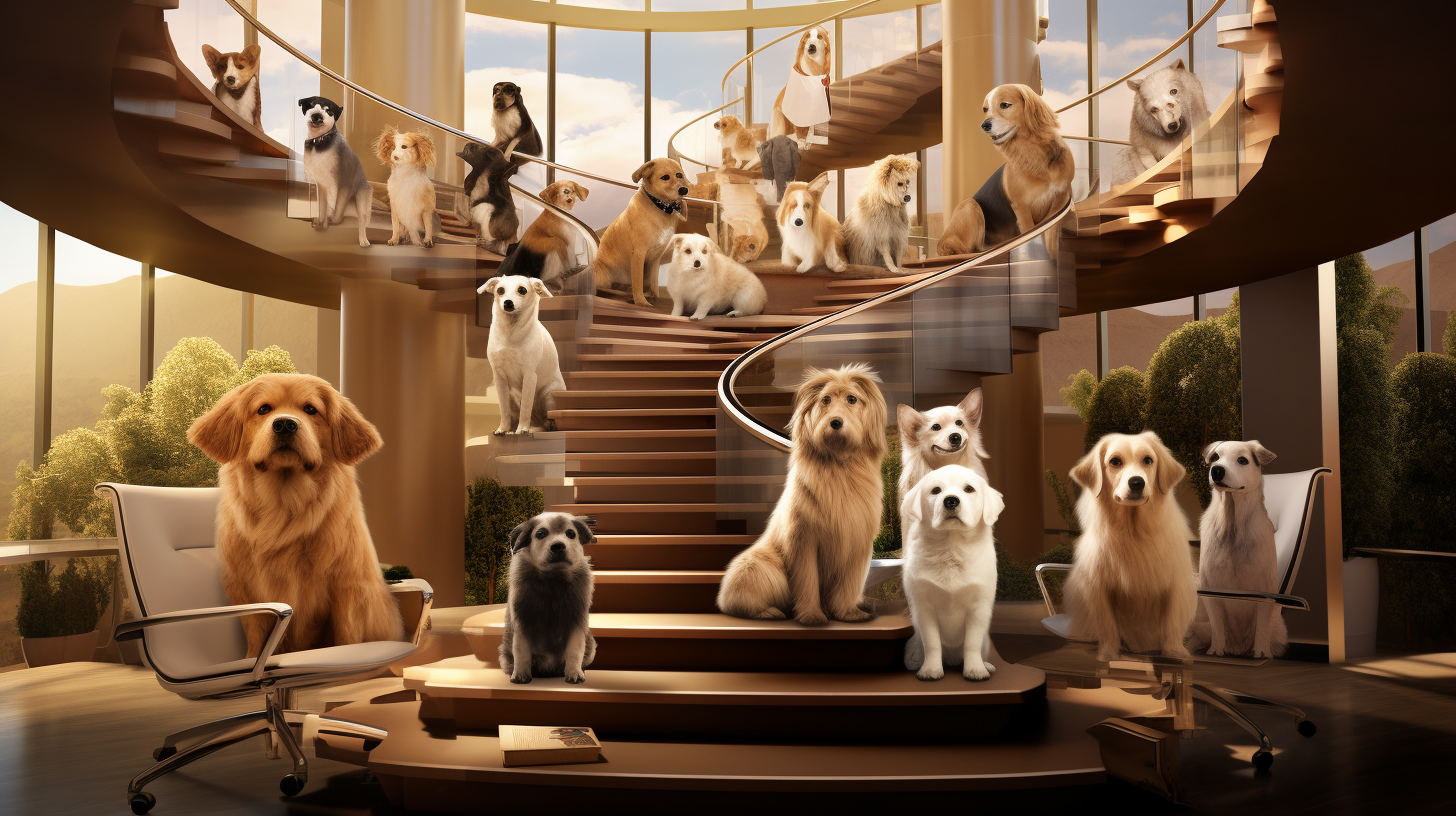In an ever-evolving landscape of dog-topia, the genius of Barkitects reshaping our pup-ulated spaces into dog-friendly buildings has never been more apparent. This revolution in canine construction is tail-waggingly innovative and shows no signs of slowing down, as Barkitects continue to unleash their creativity.
As our four-legged citizens demand more from their living, working, and playing environments, the responses have been nothing short of extraordinary. Urban dens are being transformed into havens that cater to the canine sense, designed to maximize comfort and happiness. From flooring that cushions paw pads to sniff-friendly gardens integrated into office spaces, the attention to detail is impeccable.
The heart of these architectural endeavors lies in the understanding of a dog’s perceptual world. Acoustic ceiling tiles that mute the chaos of city life, color palettes calibrated to canine vision, and lighting systems designed to echo the calming effects of a sunny park day are no longer the exception but the standard. Vibrant communal spaces such as Barkeries (dog-centric eateries) are springing up, where the menu is designed for the refined canine palate and furniture withstands the test of rigorous tail-wagging.
One revolutionary development is the Paw Pad, a multi-sensory navigation floor system that guides dogs through buildings using subtle texture changes and scent trails. This innovation not only makes navigation a breeze for our faithful friends but also enhances their overall sensory experience. Plush rest nooks outfitted with the latest comfort technology, from temperature-controlled beds to therapeutic pressure point mats, ensure that a dog’s well-being is the top priority in residential constructions.
Sports and recreation have not been left behind. Following the revolutionary ideas seen in ‘Paws and Reflect: Dog Parks as Modern Agoras’, it’s clear that play and community remain integral to canine culture. Sporting facilities now include interactive agility courses with adaptable difficulty settings and hydrotherapy pools for both exercise and relaxation, keeping in mind the diverse needs of athletic pups and those who prefer a more leisurely pace.
Even historical preservation has a new twist: landmark buildings are being retrofitted with doggie doors of grandeur, ornate water fountains at snout-level, and artworks reimagined from a canine perspective. Museums now offer exhibitions curated to a dog’s interests, ensuring that history and culture are accessible to all members of society.
Of course, sustainability is a key bone to pick in contemporary barkitecture. Eco-friendly materials, renewable energy sources, and waste disposal systems that convert shed fur and other by-products into energy are all integral parts of modern canine construction.
It’s worth noting how these architectural advancements align with broader societal values, such as inclusivity and accessibility. Buildings are now expected to accommodate dogs of varying sizes, ages, and abilities with ease and elegance, much like the dog parks have done.
Indeed, the work of Barkitects is a reflection of our society at large, one where the needs of the furry majority are anticipated and thoughtfully catered to. As we continue to strive for a more paw-fect world, these dog-friendly buildings not only serve their immediate practical purposes but also stand as monuments to the ingenuity and spirit of the Canine Republic.
To ignore this trend would be to deny the very essence of our dog-driven society. Barkitecture is not just about bones and bowls; it’s about understanding and embracing the canine way of life in the most empathetic and innovative ways possible.
